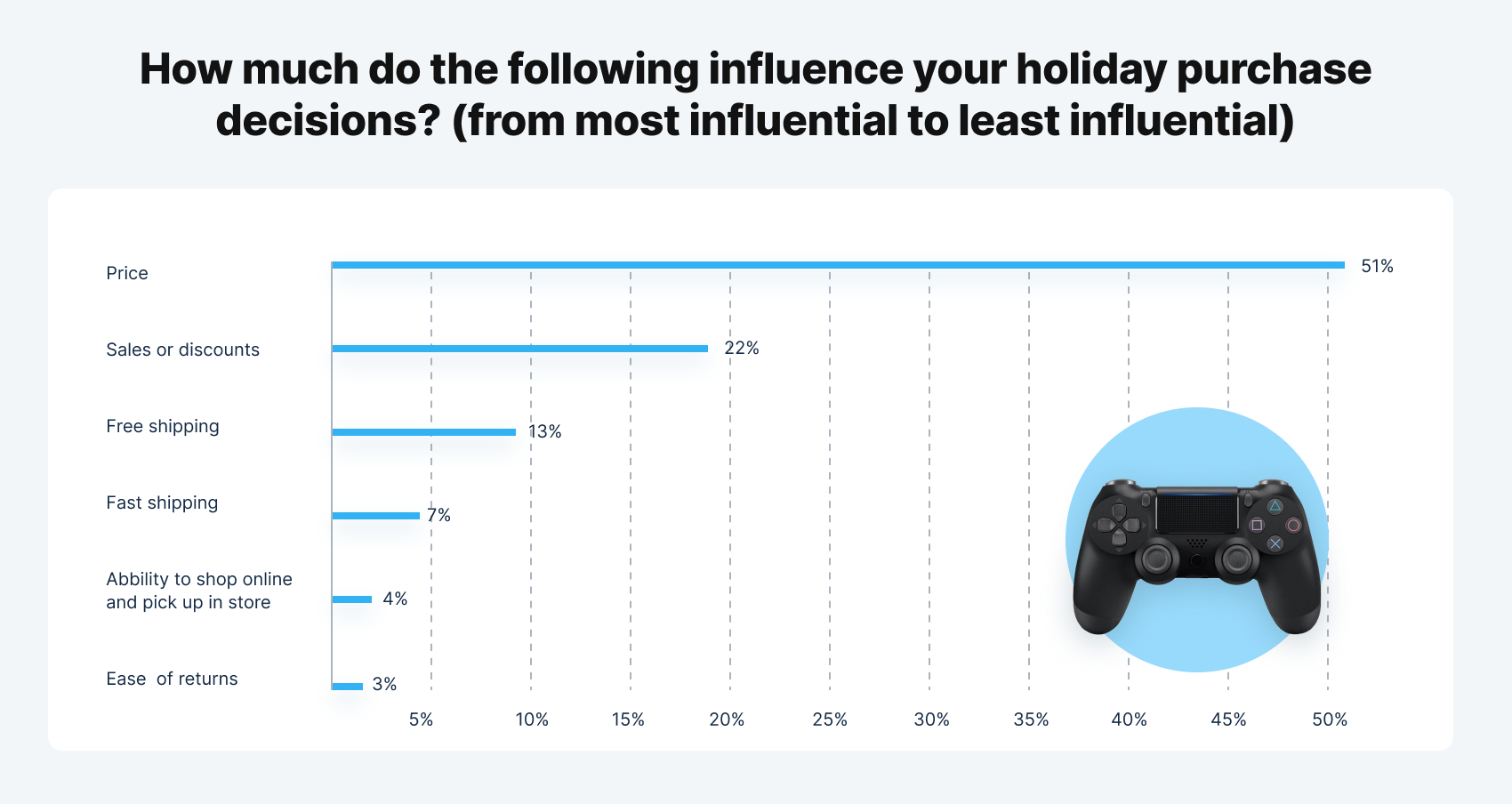Content navigation:
- Discounting Tactics That Don’t Put Your Pricing Strategy At Risk
- What is Discount Pricing?
- How to Calculate Discount Prices?
- What are the 3 Types of Discount Pricing?
- A Discount Pricing Example
- Who Does Discount Pricing Work Best For?
- Discount Pricing Strategy Pros and Cons
- Conclusion
Discounting Tactics That Don’t Put Your Pricing Strategy At Risk
Clients always want to obtain the most value for their money while shopping for items. Merchants selling these goods will constantly aim to satisfy their target market's needs while making a profit. It takes constant balancing to satisfy merchants' needs to maintain profits and customers' needs to seek out offers. This is why a discount pricing approach is required.
If you often run promotions, use discount pricing, and cut prices, you risk having your product seem cheap and devalued by your consumers. For this reason, it is important to know more about discount pricing. In this article, you'll learn "What is discount pricing?" and look at several efficient discount pricing techniques for e-commerce businesses.
What is Discount Pricing?
Discount pricing is a promotional pricing strategy in which the initial cost of a product or service is lowered to boost sales, move inventory, and increase traffic.
Reduced prices appeal to people because they make them feel like they are getting a good bargain. Moreover, discounting techniques create a feeling of urgency that may encourage additional sales. Businesses often provide discounts for cash payments, bulk purchases, and holidays.
How to Calculate Discount Prices?
Now that you know the definition of discount pricing, you need to move on. And one of the most essential abilities needed to manage finances is the ability to calculate discounts. Discounts are typically calculated by multiplying the originally indicated price by the discount percentage expressed in decimals. You must compute the difference between the item's initial price and the discount to get its net selling price. Use the procedures listed below to determine discounts:
- Determine the difference between an item's list and final selling prices.
- Deduct the selling price from the list price to get the value of the discount amount.
- Find the ratio between the discount amount and the list price, then multiply it by 100 to get the discount %.
For instance, if a jacket has a $45 list price and a $30 selling price, you may determine the discount by deducting the selling price from the list price.
That is, $45 - $30 = $15. You now need to discover the ratio of the discount amount and the list price, which is $15/$45, to compute the discount % on the shirt. Multiply it by 100.
It suggests that 15/45 × 100% equals 33,3%, so the garment is now 33,3% less expensive.
What are the 3 Types of Discount Pricing?
There are three primary methods for discount pricing. Which one is ideal for you will depend on several factors, including your product, industry, goals, and overall company plan. It is advisable to get acquainted with each of them since they provide distinct advantages and may be used at various stages of your sales process.
In 2022, retail e-commerce sales during the holiday season in the United States totaled approximately $228 billion. The image helps to understand what the buyer is most focused on, especially during the holidays.

Seasonal
Sales events, such as Black Friday and Cyber Monday or the pre- and post-Christmas sales, are driving 22% of clients and are becoming an increasingly important part of a retailer's earnings. This rise in sales volume is mostly due to competitors' seasonal discount tactics to provide enticing offers to customers.
However, using the same strategies can boost client involvement during other high or low seasons. This can include matching other people's offerings on the market or creating interest during a less common period when rivals aren't as likely to run deals.
Clearance
The offer about clearance creates a feeling of urgency, intending that customers would feel pressured to buy immediately to avoid missing out. These may be pretty successful strategies for generating attention outside of significant annual occasions. To ensure that the company can meet any surge in demand, they must be controlled appropriately. The need for fulfillment and delivery or an increase in online traffic might cause this.
Volume
These discounts, which often provide greater savings with larger orders, encourage customers to purchase goods in larger numbers. They are very helpful in B2B or intermediary firms, where the clientele is more used to placing bulk orders. When used correctly, this pricing technique may be a helpful tool for significantly reducing stocks while still ensuring that demand can be satisfied.
A Discount Pricing Example
Discount pricing tactics often coexist with other extended marketing campaigns. When you buy certain point items, they combine to give you even more rewards. Amazon employs this tactic. The internet giant has a brilliant strategy: offering goods subscription discounts. This strategy works well at weaning consumers off of manual product repurchases that they will eventually need to make. Amazon gives them a percentage discount in exchange at that exact moment.
However, Alibaba offers a discount for purchasing in quantity. The massive Chinese retailer offers discounts ranging from 20% to 60% on inexpensive items for the vendor to ship. While the merchant maintains its profitability, it acquires notoriety, accessibility, and positive ratings, while the user's expenses drop dramatically.
Lastly, IKEA. Their clients' two most sought-after promises are "new lower price" and "IKEA family member discounts." Both discuss various applications of discounted pricing. The former entails seasonal price reductions on a broad range of commodities, maybe due to production realignment or increased demand for the product. The latter honors the loyalty of regular clients.
Depending on the season, individuals obtain discounted rates on certain items as members of a shopping club. IKEA recently launched a promotion that offered monthly discounts on a different category of products. As a result, their clients may take advantage of these deals all year round.
These are just a few discount pricing examples, but you may want to know more. You may see similar offers at your favorite stores.
Who Does Discount Pricing Work Best For?
Discount pricing works best for retail stores. They can use discounts to clear out excess inventory. This helps liquidate unwanted products quickly. For SaaS companies, discount pricing is trickier. The price reflects the value offered. Discounting can undermine perceived value.
Customer segments value products differently. Some are price-sensitive, and others value different features. Discounts may attract bargain hunters initially. But long-term, pricing must align with customer willingness to pay.

Discount Pricing Strategy Pros and Cons
Whatever the situation, there are always advantages and disadvantages. And it is essential to know them in advance before planning the right discount pricing strategy.
Pros:
- Aids in closing transactions. Businesses may enhance sales and save bargains by offering discounts to customers when prospective offers are about to expire. Please take note of this: Don't base all your sales efforts on discounted prices.
- Lowers the energy of activation. Offering discounts allows clients to choose a purchase more quickly rather than deliberating over it for too long. Discounts let customers test a product until they're ready to commit, which lowers their activation energy.
- Promotes recurrent purchases. By offering a lower price on your product or service, you may attract prospective customers who would not have found you otherwise. This first encounter might result in an enhanced possibility of purchasing and greater interest. Due to the initial incentive they received, it might encourage clients to make a purchase even after you stop offering the discount.
Cons:
- Reluctance to make a payment. Consumers who obtain a discount when they first sign up often have a lower willingness to pay than those who do not. If you give them a discount straight away, it may be harder to upsell them on extra goods or services. It might also be more difficult to persuade them of the advantages of more expensive offers as their sense of value could be fixed on the reduced price.
- Increased attrition among customers. Consumers who have benefited from discounts often have a far greater percentage of customer attrition than those who did not. Accordingly, giving discounts might actually result in a shorter average client lifespan. Discounts may work well to draw in new clients initially, but it's crucial to consider how they can affect repeat business.
- Perception of warp bands. Offering large discounts on goods or services regularly runs the danger of making your company known as a "bargain brand." This may give the impression that it is less expensive or of worse quality. Customers can concentrate on your goods' value or distinctive features rather than your brand's constant pursuit of the lowest pricing. Your brand's reputation and sales will suffer significantly from such a view.
Ways Discount Pricing Strategies and Tactics Can Improve Customer Loyalty
Discount pricing strategies in retail and tactics effectively improve customer loyalty when implemented strategically. Here are some ways discount pricing can enhance customer loyalty:
Referral Discounts
When customers recommend new customers to your brand, they get these discounts.
This referral code offers a two-way discount: the new customer will get money off their first purchase, and the referrer will receive money off each additional customer they bring in. Using a discount strategy helps boost organic traffic and brand exposure.
According to certain statistics, customer referrals are five times more likely to utilize your referral program than non-referrals, which might make your referral program a self-fulfilling prophecy.
Discounting Based on Location
Two common uses for location-based discount models are reducing delivery costs or targeting customers in certain areas. Leveraging this method often results in lowering delivery costs for certain consumers in specific locations.
Volume Discount Pricing
This kind of pricing technique, sometimes referred to as quantity discount pricing lowers prices for large purchases made by customers.
Two categories of volume discounts exist.
- Non-Cumulative Quantity Discounts. This discount encourages customers to make large purchases since it is only available on a single order.
- Cumulative Quantity Discount. It incentivizes customers to make more purchases by providing discounts on orders placed within a certain time frame.
Generally, volume discounting works best in B2B e-commerce.
When selling consumable items, volume discount pricing might benefit consumer goods e-commerce firms.
Conclusion
A discount pricing plan is one effective method for growing your e-commerce consumer base and increasing conversion rates. You can enhance sales, foster a sense of urgency, and foster loyalty by providing discounts. Discounts are not all the same, however.
You can safeguard perceived value while encouraging sales and raising order values with clever offers and targeted marketing. The secret is to test and optimize continuously.






